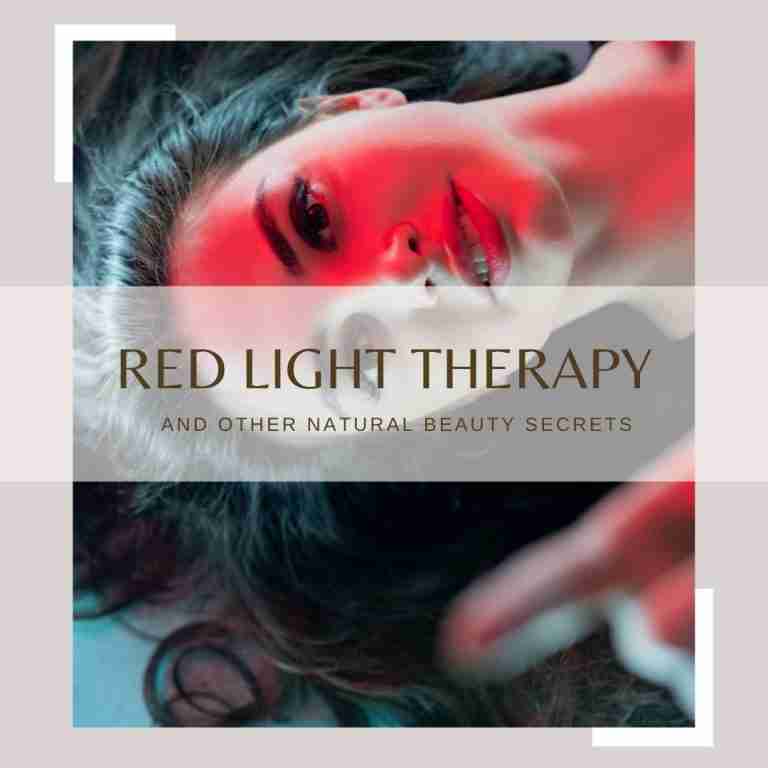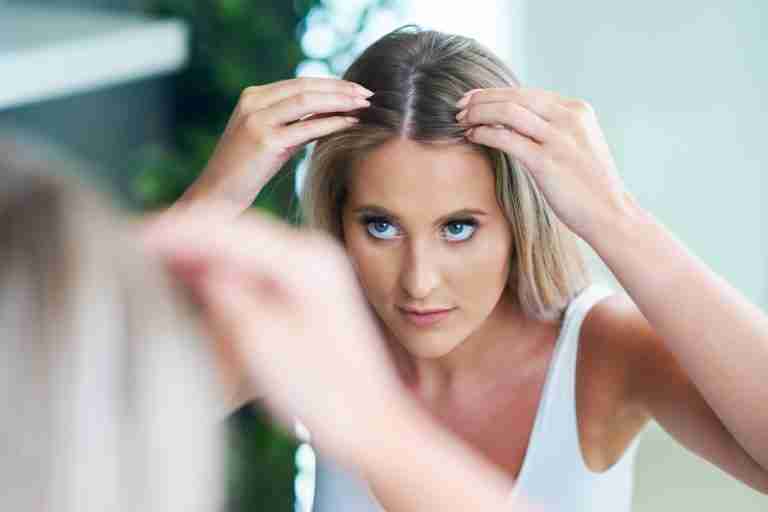The Dirty Truth- The 14 Toxins In Your Beauty Products
The Dirty Truth- About Toxic Ingredients In Beauty Products
Non-toxic, clean beauty products have seen a significant demand in the last several years. Increasingly, women, in general, are not willing to settle for controversial ingredients, including parabens, sulfates, phthalates, and artificial fragrances. It’s important that all women are aware of the list of chemicals that may be lurking in your beauty products because the FDA isn’t protecting us. We need to take control of this ourselves.
Learn what toxins are hidden in your beauty products and why it’s important to your health. The FDA doesn’t closely regulate chemicals in beauty products so we need to learn how to self-regulate.
After doing lots of research, I wanted to make sure you were aware of the dirty truth behind beauty products sold in the United States. It’s not a pretty story ladies. I will share the list of chemicals and what to look out for when buying any beauty products. I am furious to find out that many products I have been using for many years contained these ingredients.
When you want to shop for toxic-free, safe, clean beauty products, shop here.
 WHY USING NON-TOXIC SKIN CARE MATTERS
WHY USING NON-TOXIC SKIN CARE MATTERS
Our skin is our largest organ — the average human body contains around 18 square feet of epidermis! All that skin plays a key role in our well being because it serves as a protective barrier, helps to maintain stable body temperature, and allows us the sense of touch.
Our bodies absorb anything we put on our skin. I find it extremely fascinating that skin acts as passageway from the dermal layer into the bloodstream.It’s also a bit scary knowing this as well!
It’s important for all of us to understand that our skin absorbs up to 60% of anything we rub into our dermis. This became clear to me when I used estrogen patches during my infertility days. I applied the patched to my skin where the hormone was absorbed.
Chemicals like phthalates are endocrine disruptors have been linked to reproductive issues like lowered sperm counts and thyroid problems. Other chemicals in cosmetics are known to contain carcinogenic properties and may increase the risk of cancer. Yes, cancer causing ingredients are hidden in many beauty products we use daily.

The FDA Doesn’t Approve Beauty And Skincare Products!
Shockingly the FDA doesn’t have to approve beauty and skincare products before they hit store shelves!!! Can you believe it? It’s real, and while that doesn’t necessarily mean they are harmful, we need to read the labels and take control of what products we put on our skin. We absorb up to 60% of what we put on our skin. Children’s bodies absorb 40-50% more than adults. They are at higher risk for diseases later in life when exposed to toxins.
Chemicals such as BHT (Butylated hydroxytoluene – E321) and BTA (butylated hydroxyanisole (BTA – E320) are poisonous substances that are used as moisturizers and preservatives. Lipsticks, hair care products, cosmetics, sunscreens, deodorants, creams, and fragrances may all contain BHT or BTA.
You should know that the proper use of BHT in the food and cosmetics industries is still allowed, although research has shown that this substance is carcinogenic. It has been linked to asthma and behavioral problems (hyperactivity and attention disorders). Besides, this substance is said to cause endocrine disruption.
Synthetic preservatives or parabens, aluminum and, mineral oil are just a few select harmful chemicals we don’t want in our skincare and makeup.
The lack of policy around chemicals in beauty and personal care products in this country (for more, read more on this) is terrifying. Most women, including myself, have not been educated about the flagrant green-washing and marketing- “natural,” pure” and “organic” – that lulls people to think they are buying a safe product. It makes me so mad! There needs to be more transparency in the cosmetic and personal care industry.

Read Your Labels- Avoid These 14 Toxins
1. Coal Tar Dyes
This pigment gives beauty products—from mascara and powdered shadow to hair dye—an inky black hue and is a byproduct of burning coal. The EWG ranks it as a 7 to 10, as studies have indicated it as an irritant and potential human carcinogen.
2. DEA
The compound diethonolamine is used in a variety of products as a pH balancer (when you formulate beauty products with a variety of ingredients, the final pH might be too acidic, and this is added to make the final pH more alkaline). It’s also the reason washes and soaps are sudsy.
Currently, it is banned in the E.U.—however, the FDA does not deem it necessary to restrict its use. Along with DEA, look for its two other counterparts: MEA (monoethanolamine) and TEA (triethanolamine).
3. Dibutyl phthalate
DBP is an oily substance used as a common fragrance ingredient, plasticizer (an additive that makes a formula more flexible or fluid), and solvent (a chemical that helps dissolve other actives). Though it is currently banned in the E.U., California has flagged it as hazardous material on Proposition 65 due to its potential to disrupt reproductive health.

4. Formaldehyde-Releasing Preservatives
Few products are going to outright say they contain formaldehyde, yet several preservatives release the irritant over time, with temperature variations, or when it comes into contact with other actives. According to the EWG, a few of the most common are DMDM hydantoin, Imidazolidinyl urea, Diazolidinyl urea, Quaternium-15, Bronopol (2-bromo-2-nitropropane-1,3-diol), 5-Bromo-5-nitro-1,3-dioxane, Hydroxymethylglycinate.
Formaldehyde is an issue for several reasons: First, we come into contact with the probable carcinogen often from various sources, from pollution to secondhand smoke—so we should limit our exposure when possible. But it’s an issue for more day-to-day reasons, too: Research shows that even trace amounts of formaldehyde are enough to trigger dermatitis in humans.
5. Phthalates and Parabens
Phthalates and parabens are ubiquitous in the beauty industry, used in body care and skin care and makeup. “Banned by the European Union in 2003, phthalates and parabens are a group of chemicals commonly used as preservatives in cosmetics and pharmaceuticals,” functional medicine doctor Frank Lipman, M.D., tells mbg. “[However] Both have been shown to be carcinogenic.”
Their overuse is much of the reason they are cause for concern, as they are absorbed into skin and have been shown to build up in the body with regular use in a variety of human studies. However, by limiting your exposure, those same studies show they are fairly easily flushed out of the body. Buyer beware!
6. Undisclosed Fragrances
According to clean beauty experts the major problem with fragrances is transparency. Fragrances are considered a trade secret, and therefore brands do not have to disclose what actually went into the product—they can just put “fragrance” on the ingredient label. One older study found that there are, on average, 14 undisclosed ingredients in every product that has “fragrance” listed.
7. BHA and BHT
BHA (or butylated hydroxyanisole, not to be confused with beta-hydroxy acids) and BHT (butylated hydroxytoluene) are closely related synthetic preservatives found in many skin care products like moisturizers and creamy makeup products like lipsticks.
Currently, the watchdog and advocacy nonprofit the Environmental Working Group notes that BHAs, in particular, might be cause for concern, rating the ingredient a 5 or 6 on the scale of 1 to 10.
8. PEG Compounds
These are also called polyethylene glycols and are petroleum-based compounds that are widely used in cosmetics as thickeners, solvents, softeners, and moisture-carriers.
The EWG rates polyethylene glycol low itself; however, clean beauty experts’ primary concern with the ingredient class is the products it releases: ethylene oxide and 1,4 dioxane.
These are heavy-duty sterilizers that the federal agency the Environmental Protection Agency notes, “chronic, long-term exposure can cause irritation of the eyes, skin, nose, throat, and lungs, and damage to the nervous system” as well as evidence of being a human carcinogen.
9. Petrolatum, PAHs
Petrolatum, you’ll likely see it as a petroleum, is a gelled mineral oil. Think Vaseline…. the jar we all used to have in our house. It’s used as a highly occlusive conditioning agent, meaning it helps seal in moisture. It is a byproduct of refining petroleum.
Again, this is a tricky one: When it’s fully refined, it’s safe for external human use—with research showing no health concerns. However, it’s not regulated by the FDA in the U.S., so it’s possible that the petroleum that ends up in various beauty products is contaminated. The primary contaminant is polycyclic aromatic hydrocarbons (PAHs), which has been shown in human studies to be a carcinogen.
10. Siloxanes
Otherwise known as silicones, these are often found in skin and hair care products—however, they get the lion’s share of attention in the hair care space. They are used as softening and smoothing agents, providing a thin film over skin or hair that gives off the appearance of healthy, vibrant strands or complexion.
The problem with this ingredient class is twofold: The first is specific silicones (D4 and D5) are shown to be potentially hazardous for human health and can also bioaccumulate in our water supply.
11. Sodium Laureth Sulfate
Sulfates are foaming and cleaning agents in soaps, detergents, and shampoos—and are met with ire in the clean beauty industry. We should note: Many people think sulfates are classed as carcinogenic, but they are, in fact, not—they are also allowed in the E.U. However, it’s suggested to avoid the ingredient class as it is irritating to skin, eyes, and hair—stripping off all your natural oils.
This has been shown to be very problematic for sensitive and inflamed skin, as it can trigger dermatitis. And lately, significant research has shown sulfates are highly disruptive to your skin microbiome, which can have a cascading inflammatory effect on the body: Essentially, recent studies suggest that when your skin barrier is compromised, it not only causes external inflammation, but it causes internal inflammation as well. One study found that people with a poor skin barrier had more proinflammatory cytokines in the bloodstream than those who had healthy skin barrier.
12. Triclosan
This ingredient has had some of the most robust studies done on it in the last few years, and the research is showing more and more that its use in personal care and hygiene products should be restricted. In fact, the EWG now rates it at a 7 depending on usage.
Even though the FDA banned its use in antibacterial hand soaps in 2017, the agent is commonly found in toothpastes, dishwashing soaps, and other cleaning products. “This is a synthetic antibacterial ingredient that has been compared to nothing less than Agent Orange. The Environmental Protection Agency registers it as a pesticide, dangerous to any living organism.
It is also classified as a chlorophenol, which means a cancer-causing chemical class. Triclosan disrupts hormones, can affect sexual function and fertility, and may be linked to birth defects,” says Lipman.
13. Toluene
Listed on labels of most of the personal care products as benzene, toluol, phenylmethane or methylbenzene, toluene is a petrochemical ingredient derived from petroleum or coal sources. It is a very efficient solvent and can dissolve paint and paint thinners; however, our concern with the chemical is purely medical. Toluene causes respiratory problems, skin irritation, and nausea in humans.
14. Hydroquinone
This one concerns me since I had a bad case of melasma after my pregnancies. I used several products with hydroquinone for years! It’s a topical bleaching agent, hydroquinone is found in skin-lightening creams and serums, and used in the treatment of hyperpigmentation. It’s sold over the counter in two percent concentrations, but stronger formulas are available by prescription.
The problem: Hydroquinone was approved by the FDA in 1982, but several years later, it was temporarily pulled from the market due to safety concerns (it turns out the products in question had mercury in them, so the adverse effects weren’t because of the skin-lightening ingredient).
However hydroquinone itself been linked to certain cancers, decreased immune response, abnormal function of the adrenal gland, and a skin condition known as ochronosis. It’s because of the perceived risk that the European Union alongside Japan and Australia have banned the ingredient.

Shedding Some Light On Sunscreens
Okay… there are two types of sunscreens: mineral and chemical. Mineral sunscreen uses zinc or titanium dioxide to physically scatter and deflect the DNA-damaging UV rays that can lead to premature skin aging and cancer. Mineral sunscreens tend to be gentler and more natural, therefore, safer for babies and those with sensitive skin.
Chemical sunscreens use ingredients like avobenzone, homosalate, octisalate, octocrylene, or oxybenzone to create a chemical reaction on your skin, turning the harmful UV rays into heat. These chemical sunscreens are often easier and more luxurious to apply, since they’re lightweight, readily absorbed, and leave behind no white cast. Both work if you use the right amount and remember to reapply.
Why You Want To Use Mineral Sunscreen
Baazar Magazine notes that oxybenzone, also known as benzophenone-3 (BP3), is the most notorious chemical UV filter used in an estimated 60 percent of U.S. sunscreen formulas. A recent study now suggest that the ingredient is strongly suspected of being an estrogenic hormone disruptor and that it passes through the placental barrier, leading to low birth weight and birth defects like Hirschsprung’s disease.
A study from 2016 found a link between exposure to chemical UV filters and male infertility. In May 2019, the FDA confirmed that the “systemic absorption” of oxybenzone and other chemical filters from sunscreen exceeds the recommended threshold, which is particularly problematic for children.
What’s more, oxybenzone and other chemical filters have been shown to be allergenic and irritating for people with skin conditions like rosacea, since they cause a heat-based chemical reaction on the skin’s surface.
The FDA recently proposed sweeping changes to sunscreen regulations, including the ban of two once-common ingredients: para-aminobenzoic acid (PABA) and trolamine salicylate. The agency is currently reviewing safety data of 12 chemical sunscreen ingredients, with results expected later this year. Look at your old sunscreen to make sure it does not contain these ingredients.
The Good News- The Consumer Demand for “Clean” Is Working
The good news is that the consumer demand for safer products and more transparency has created a new movement in the cosmetic industry to announce initiatives to push for more reliable products.
A few of the enormous beauty brands are also working to remove certain chemicals such as triclosan, phthalates, and parabens from their products. It’s is a great start, ladies.
Because we are starting to learn what toxic products do to our bodies. Celebrities, leading brands, and retailers have taken up the cause, including Sephora and clean-only leaders like Credo Beauty ( has eight retail stores and a comprehensive online store). Follain,. Target (has announced a “chemical strategy” promoting full ingredient transparency). CVS (has claimed to remove all potentially toxic ingredients from it’s in-house branded products). What that means for you: not only clean formulas but those that offer real payoff without compromise.
Some excellent new brands only manufacture non -toxic products like Violet’s are Blue Skincare. One of my favorites! It is sad to learn that some of the most popular brands continue to use hazardous chemicals. The same companies also use bogus marketing claims stating that the products are “natural” or market them with pink ribbons indicating they support women’s health issues.
Pink Washing
This pink ribbon marketing is often termed “pinkwashing” – where companies market themselves to be champions of women’s health, yet they manufacture products with deadly carcinogens!
Let’s face it; we all know about breast cancer. We need strategies to prevent it, and an ideal first step would be getting carcinogens out of the products we put on our bodies and our babies.. To learn more about breast cancer prevention, check out a reliable cancer organization, The Breast Cancer Fund.













